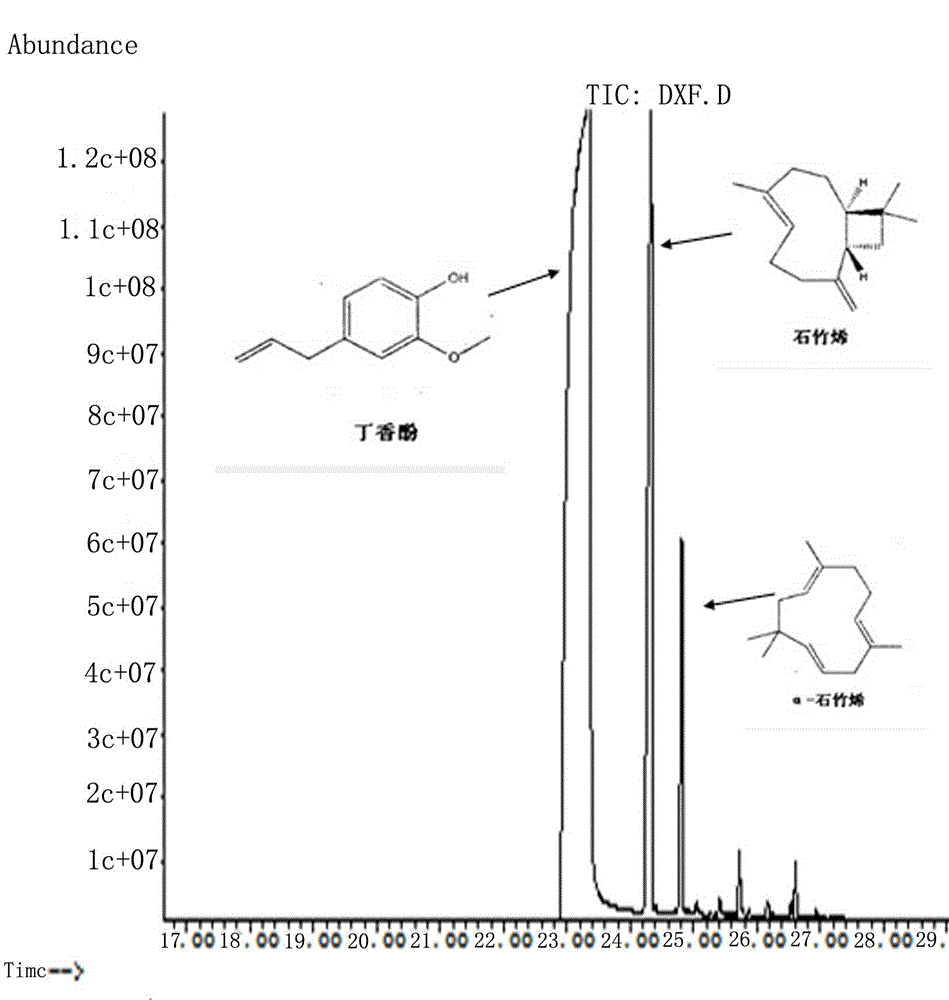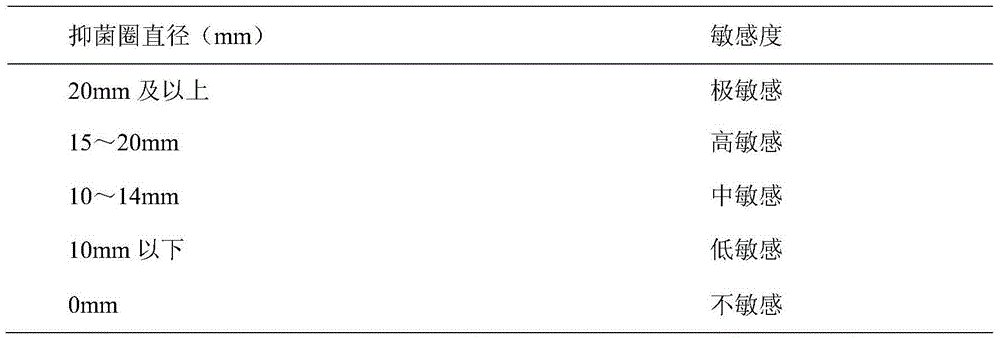Application of eugenol in food-borne pathogenic bacterium in-vitro inhibition
A technology of food-borne pathogenic bacteria and eugenol, applied in application, food preservation, food science and other directions, can solve the problems of easy spoilage, easy spoilage, loss of edible value, etc.
- Summary
- Abstract
- Description
- Claims
- Application Information
AI Technical Summary
Problems solved by technology
Method used
Image
Examples
preparation example Construction
[0021] The preparation method of bacterial culture medium is as follows: the Na of 0.2mol / L 2 HPO 4 、KH 2 PO 4 The solution is prepared according to the following ratio and tested with a pH meter: pH=5.0 buffer solution preparation: 0.2mol / L of KH 2 PO 4 The solution is adjusted to pH=5.0 with 0.1mol / L NaOH solution; pH=6.0 buffer solution preparation: 0.2mol / L NaOH 2 HPO 4 :0.2mol / L of KH 2 PO 4 =12.3:87.7;
[0022] Medium preparation with pH=7.0: tryptone soy agar (TSA) medium: weigh 38.0 g of TSA into 1 L of distilled water, autoclave at 121° C. for 20 min, and set aside. Tryptone Soy Broth (TSB) Medium: Weigh 30.0g of TSB into 1L of distilled water, autoclave at 121°C for 20min, and set aside.
[0023] According to the above method, use the buffer solution of pH = 5.0, 6.0 as the solvent to prepare the medium solution, then adjust the pH value with 6mol / L HCl or 0.2mol / L NaOH, and calibrate with a pH meter to obtain pH = 5.0, 6.0, 7.0 TSA or TSB medium solution. ...
Embodiment 1
[0025] Use an inoculation loop to pick up the hyphae cultured on the slant, move it to TSB medium for culture, place it on a shaker, cultivate it at 150r, 37°C for 24h, take it out and store it in a refrigerator at 4°C.
[0026] Take an appropriate amount from the activated bacteria test tube and inoculate it into the corresponding liquid medium, put it in the incubator on a constant temperature shaker for rejuvenation, cultivate for 8-10 hours, take an appropriate amount of rejuvenated bacteria and add sterile water to prepare a bacterial suspension. Microscopic counting method, so that the bacterial suspension contains viable bacteria at 10 6 ~10 7 cfu / mL.
[0027] 2-Methoxy-4-(2-propenyl)phenol is analyzed by GC / MS as a liquid sample, and the structural formula of the components detected by the mass spectrogram is shown in figure 1 , the abscissa refers to the mass-to-nucleus ratio, and the ordinate refers to the abundance of ions. The chromatographic peaks were searched...
Embodiment 2
[0029] Under the conditions of pH=5.0, pH=6.0 and pH=7.0, the MIC of 2-methoxy-4-(2-propenyl)phenol to Escherichia coli, Staphylococcus aureus, Salmonella and Shigella was determined.
[0030] 2.1 Filter paper method
[0031] The filter paper diffusion method is to place the filter paper soaked in essential oil on the surface of the agar plate coated with the experimental bacteria, the essential oil will diffuse from the center of the paper to the edge, and after a period of incubation, the diameter of the inhibition zone is measured to evaluate Bacteriostatic effect.
[0032] Using a hole punch, the qualitative filter paper was made into a small circular disc with a diameter of 6 mm. 2-methoxy-4-(2-propenyl)phenol is a liquid drug that can be used directly. Then put the configured medicine, small round paper, large filter paper, centrifuge tube, centrifuge tube rack, pipette gun, pipette tip, small Erlenmeyer bottle, waste liquid tank, alcohol lamp, tweezers under ultraviol...
PUM
 Login to View More
Login to View More Abstract
Description
Claims
Application Information
 Login to View More
Login to View More - R&D
- Intellectual Property
- Life Sciences
- Materials
- Tech Scout
- Unparalleled Data Quality
- Higher Quality Content
- 60% Fewer Hallucinations
Browse by: Latest US Patents, China's latest patents, Technical Efficacy Thesaurus, Application Domain, Technology Topic, Popular Technical Reports.
© 2025 PatSnap. All rights reserved.Legal|Privacy policy|Modern Slavery Act Transparency Statement|Sitemap|About US| Contact US: help@patsnap.com



